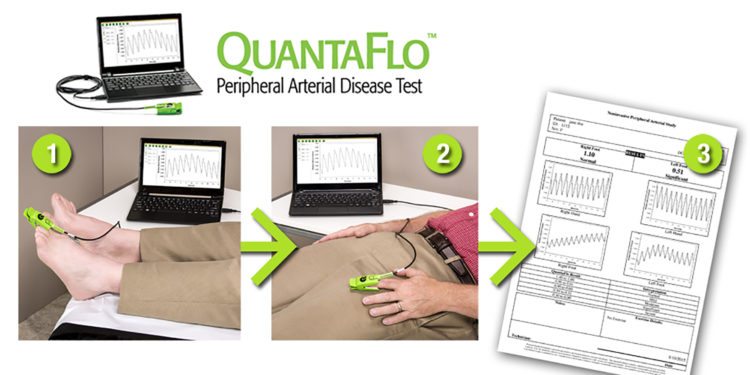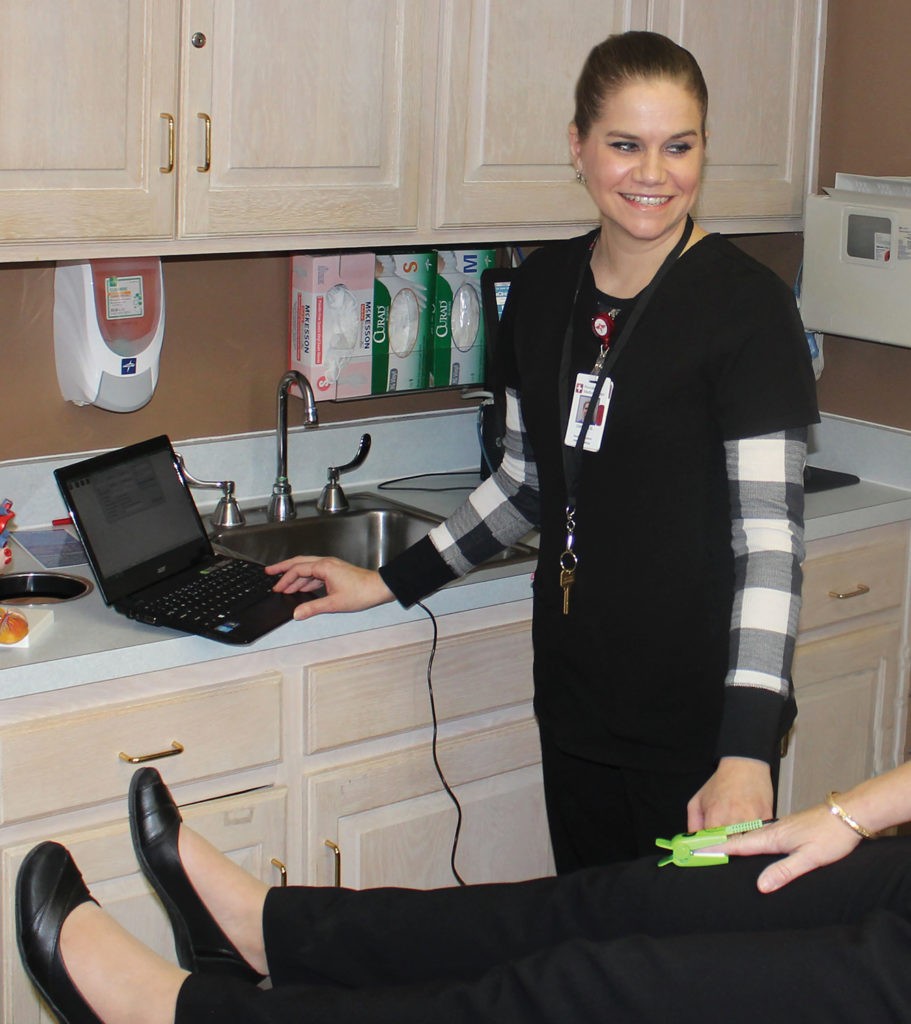QuantaFlo

A Highly Efficient Way to Identify Risk Factors to Peripheral Artery Disease (PAD)
Used as a means to identify risk factors of peripheral artery disease, QuantaFlo is a fast and easy test to perform.
The latest guidelines issued by the American College of Cardiology, the American Heart Association and the American Diabetes Association indicate “patients over age 65 or over age 50 with history of smoking or diabetes should be evaluated for vascular disease.” Thanks to a revolutionary device known as QuantaFlo for Peripheral Artery Disease (PAD) such evaluations come much easier to both patients and clinicians alike.
Through the use of QuantaFlo by Semler Scientific, the objective is for the doctor to readily identify any risk factors the patient may have that would suggest any evidence of PAD, which is a narrowing of the arteries in the lower extremities, much like the narrowing of the heart arteries that can lead to heart attacks and the carotid arteries that contribute to strokes.
Although many Americans are unfamiliar with PAD, it actually occurs more frequently than coronary artery disease, cancer and stroke. It also leads to an excess of 30,000 limb amputations on an annual basis in the United States. In fact, the Wall Street Journal has reported that PAD is “the most common, deadly and costly cardiovascular disease that the public has not heard of.” Eighteen million people have it, but only two million have been diagnosed.

Because of QuantaFlo, those numbers are improving. This device offers a practical alternative for PAD testing. Essentially, QuantaFlo operates as a significant screening modality, giving doctors the opportunity to advise and educate patients on certain risk factor modifications necessary to ward off disease in the future. This FDA-cleared and patented device is easy to use; the equipment is less complex than other measuring modalities; the training for it is simpler; and most of all, the patient feels less apprehensive about the test, as it can be performed within the doctor’s office setting without the need to transfer to a more complex vascular lab. Further, it can separate moderate, clinical and severe cases of PAD.
The primary objective with QuantaFlo is to identify those patients who have issues even though they may feel healthy. QuantaFlo offers a warning sign to patients, allowing them to work in partnership with their doctors to develop a road map for lifestyle modifications intended to change the course of disease.
“This is our way to screen PAD, which is becoming an equivalent of coronary artery disease,” noted Dr. Prashanth Katrapati of Providence Medical Group Cardiology. “The screening is intended to help identify risk factors, not to rush to stent. It tells us of significant decrease of blood flow to the legs with the simple use of a sensor on two fingers and on two toes that allow us to compare the pulse and blood pressure between those extremities.”
QuantaFlo is an effective way to screen for PAD, which is increasing in prevaleance and has major impact on longevity, similar to coronary disease. This can make a huge difference in the lives of patients, giving them a game plan of sorts to redirect their risk factors and make lifestyle changes with the intention of inspiring a healthier outcome.
For more information…on PAD, QuantaFloTM and other cardiovascular health questions, or to schedule a visit with Providence Medical Group Cardiology; call 913-596-7224; or go on-line at providencemedicalgroupkc.com






